The Common Green Magpie looks anything but common. (I swear I came up with this sentence myself but later saw that Australian Geographic has a webpage titled “The common green magpie is anything but”, which robs me of my illusions of being an original thinker).

According to the eBird description, it is everything I am not: a “neon-colored, noisy, highly social bird”. Shudder to think (not the bird part though).


Next, this post has a long section on babblers, a very ill-defined category of birds. But some of them look pretty interesting.


If the White-crested Laughingthrush is not available, sometimes White-hooded Babblers take their place in Wham! videos (see Birding Hongbenghe part 1 to understand this obscure and not very good joke).


Unfortunately, juvenile White-hooded Babblers do not look cool and hedonistic enough yet, so they are usually excluded from these videos.


Interestingly, these juveniles look more similar to another species, the Pale-billed Parrotbill, than the adult babblers – and they sometimes are part of the same flock. An interesting paper discusses the visual convergence of species in multi-species flocks while a web page has a striking photo showing the similarity of two species, one a cutia and one a sibia (photo by Wenyi Zhou, with his permission).
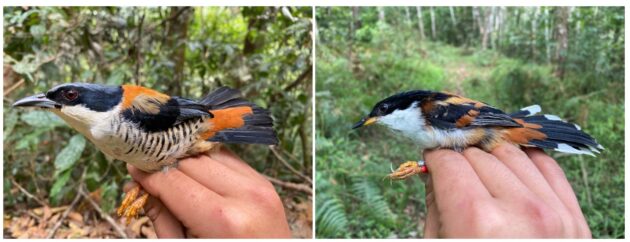
Here is the Sibia – the Rufuous-backed Sibia, to be specific – as seen at Hongbenghe.


One proposed explanation by the researchers for this phenomenon is that similar-looking birds reduce their risk of predation, as predators find it more difficult to focus on and isolate a single target. My alternative theory is that the birds are just following fashion, imitating whoever is the coolest. It was like that when I went to school, why wouldn’t it work for birds …
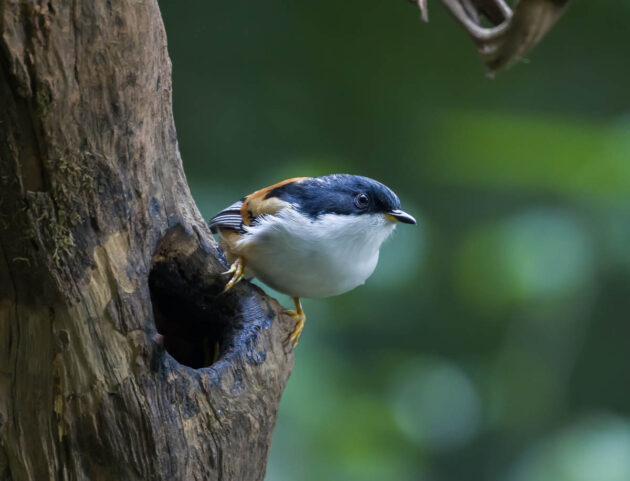
If you saw a paper titled “Road Crossing by Birds in a Tropical Forest in Northern Vietnam”, would you – like me – also immediately visualize cute tiny traffic lights and small birds lining up and waiting in front of them? Then we are both hopeless … Anyway, the paper tests whether small roads in a forest are a hindrance to birds – are they reluctant to cross? (not because of the waiting time as the study does not actually involve tiny traffic lights, unfortunately). They found that for understory birds like the Puff-throated Babbler, these roads are indeed a hindrance.


(If you want to see how this species builds its nest, see here.)

These roads are much less of a hindrance for the Pin-striped Tit-babbler, a mid-story bird.

That species is apparently at risk of extinction in Singapore – not because it is so rare, but because its genetic diversity is so low. Think of that before sleeping with your sister.

(Starting lyrics of “Razzmatazz”, a fabulous song by Pulp: “The problem with your brother / he’s always sleeping with your mother”).

According to Wikipedia, “scimitar babblers are rangy, medium-sized, floppy-tailed land birds with soft fluffy plumage. They have strong legs and are quite terrestrial. … [They] have long, downward-curved bills, used to work through the leaf litter … They are typically long tailed, dark brown above, and white or orange-brown below. Many have striking head patterns, with a broad black band through the eye, bordered with white above and below. Most scimitar babblers are jungle species, difficult to observe in the dense vegetation they prefer, but like other babblers, these are noisy birds …”
My personal favorite is the Large Scimitar-Babbler, which eBird calls a “handsome and slightly primal-looking babbler” (you can sort of imagine this bird as being kept as a pet by some cartoonish stone-age people – “Fred Flintstone and the Large Scimitar-Babbler”, perhaps?).

Unlike me, the HBW does not seem to appreciate the species much, stating that it is “hopping about in very ungainly manner.”

This is then followed by a rather ungainly description of the species’ vocalization, which I will quote in full despite the risk of being sued:

“Song a geographically and individually variable series of usually 3 short, syncopated, loud, hollow notes, the higher notes sweet and sad-sounding, often from duetting pairs, e.g. “wiu-pu-pu—wup-up-piu, wiu-pu-pu—wo-hu, whiu-pu-pu—whip-up-up”, “wiao-pu-pu—hu-pwuhu” and similar; individual phrase variants include “oh-pu”, “whiu-wao” and hurried “wiupupu” and “whipuwup”, etc. Noted also as a simple, low, throaty “tyonk-tyonk-tyonk”, the notes identical; a duetted “gul-díyá, gup”; “gru-grugyúp”, sometimes mixed with “gru-grugwééyu”; a low “greo-greo, hwéeo-wup-wup”; “wulchéwpit” (one bird) and then “wildéwdit” (other bird), the second slightly thinner and higher; “gu-gu-gruu, kúú”, last note (by second bird) level and bell-like. Call in agitation a loud, harsh, grating rattle, starting with vehement upward-inflected hiss, e.g. “fwíí-ke-ke-ke-ke-ke-ke-ke-ke-ke” or “whít-tchtchtchtch”, softer and slightly slower near end; also a short, hard “puh”.”
Don’t despair if you prefer smaller Scimitar-Babblers – evolution has developed several alternatives for you. Like the Coral-billed Scimitar-Babbler …

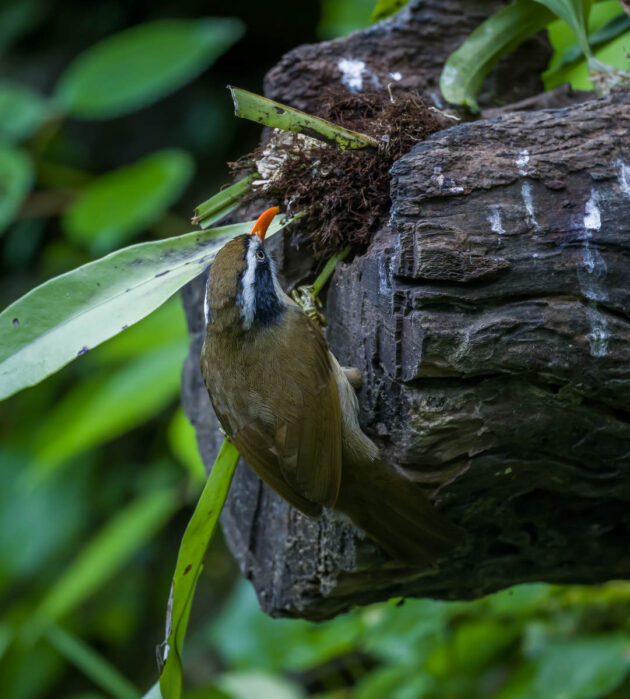
… and the Streak-breasted Scimitar-babbler.


Would you use more sunscreen lotion when going up a mountain than when staying at sea level? That would be wise, I guess – and so evolution has taught the Rufous-capped Babbler to do the same.

Apparently, the plumage of Rufous-capped Babblers occupying montane habitats had higher UV-reflectance and brightness than that of lowland birds, corresponding to the higher UV intensity in montane than lowland background light environments (note: the photos show Buff-chested Babbler, which I only realized belatedly).

A slightly more readable account of this phenomenon can be found here.

The Grey-throated Babbler is not particularly shy and thus fairly easy to take photos of.



Whereas the Streaked Wren-babbler is one of the bird species that make grown-up bird photographers cry.


Presumably directly after reading “The Lord of the Rings”, an eBird writer came up with the following description of the Grey Peacock-pheasant: “A strange-looking pheasant which passes ghostlike through dense forests”.


The HBW helpfully adds that the bird is rarely found in large flocks – though they put it a bit differently: ” Usually found alone, in pairs, or in small family parties.”

The website www.jwcpheasants.com seems to endorse polygamy for this species despite this being illegal in the USA for other animals such as humans. The site states that in captivity, “two hens can be paired with one male.”

Having recovered from reading Tolkien, eBird is a bit less mysterious about the Rufous-throated Partridge: “A beautiful little gamebird of foothill and highland forests … Brightly-colored, even for a partridge”.
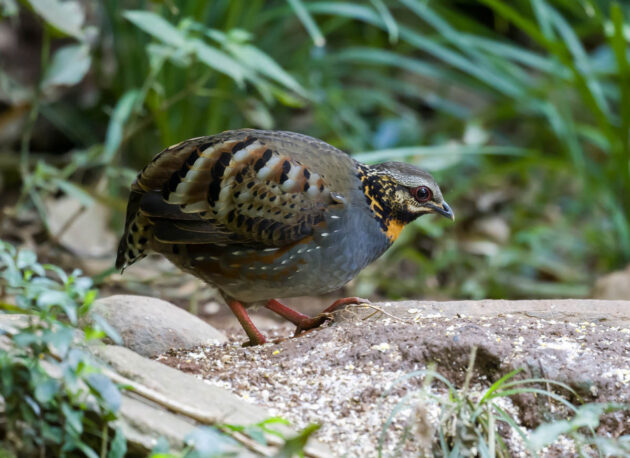
Like humans, it is “apparently monogamous” (HBW), which to me sounds a bit doubtful.

The Silver Pheasant seems a bit similar to typical Chinese (and unlike me) in liking noise and disturbance (I am writing this during Chinese New Year, a period in time when the weird obsession of the Chinese with noisy fireworks is particularly obvious).


At least in Patagonia, where this species has been introduced: “The Silver Pheasant used much more frequently areas with a high level of disturbance, suggesting that the presence of disturbed habitats could facilitate establishment and spread of this species in Patagonia.” (source). A weirdo, that bird – who likes people?


Then again, it seems they thrive in captivity – see here for details.

eBird calls the Hill Blue Flycatcher a “medium-sized confusing flycatcher”, which in itself is a bit confusing as there is no clear rationale for calling the species confusing.

What might be confusing is the scientific species name whitei as there are seven different people named White who all gave names to birds.
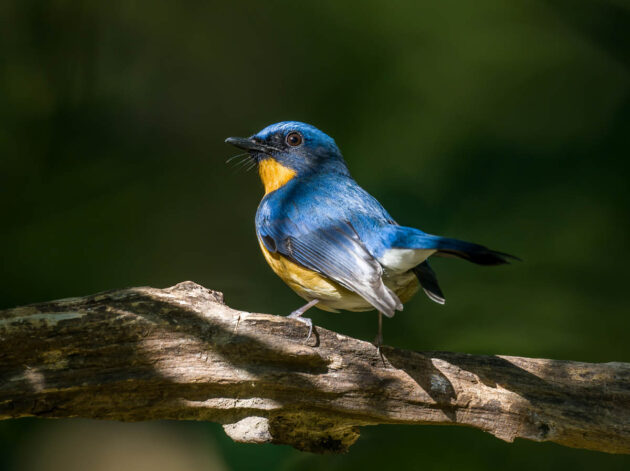
In this case, the correct one (according to the HBW) is Sir Herbert Thirkell White (1855-1931), a British colonial administrator in Burma. He also wrote some books on Burma, one of which (“A Civil Servant in Burma”) Wikipedia calls a classic. As this book was published in 1913, it is now freely available online and you can read sentences such as “The Burman has no head, and succumbs at once to a comparatively small quantity of liquor” without violating any copyright laws.
However, said book only contains the word “bird” four times, twice not even meaning real birds (“mechanical singing birds”, “a rare bird” referring to Burmese officials who are not corrupt), and twice in a rather peripheral way (“he shot birds on the wing”, “the consumption of flesh of birds”), which makes naming a bird species after him a strange choice.

The Pale Blue Flycatcher is not particularly uniformly colored, despite its scientific name unicolor.

To quote eBird: “Male is pale blue overall with a pale gray belly”

You can find a cute little observation on sleeping Common Tailorbirds here. (note: the photo shows Dark-necked Tailorbird).

The observer notes that the tailorbirds generally were sleeping peacefully on his balcony but “not when I was watching certain movies that involved fierce predators (horror movie for the tailorbirds). I once watched “Twilight: New Moon” on my computer and suddenly the tailorbirds woke up and chirped, hopped around in stress until I realised that they must have assumed that the werewolf in the show that were designed to look like real wolfs as a threat. I lowered the volume and after a while they got used to it and slowly went back to sleep.”
So, lesson learned: tailorbirds do not appreciate horror movies.
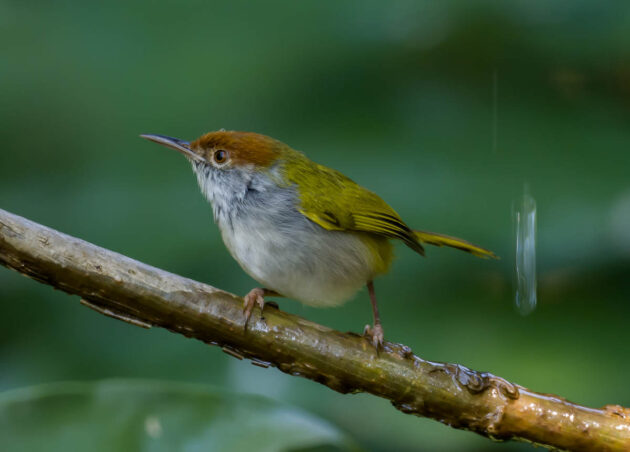
In Grey-backed Shrikes (at least those breeding on the Tibetan plateau), the eggs laid during one breeding attempt get larger with time – presumably an attempt to at least partly overcome the disadvantages the last chick faces (source). This is in contrast to other species in which the later chicks often mainly serve as food for the earlier ones.

Interested in doing research on the Orange-bellied Leafbird?

Here is what the HBW lists as priorities for future research:
“The taxonomic identity of Orange-bellied Leafbird in many areas remain to be investigated. The population in south-central Vietnam, including Da Lat Plateau, is provisionally included in C. h. melliana but might represent an undescribed subspecies. There are also reports of individuals with intermediate characteristics between the very different taxa C. h. hardwickii and C. h. melliana from alleged contact zone(s) in northern Laos and possibly south-western China. Hill ranges in eastern Myanmar and western Thailand are also suspected to be the intergradation zone between C. h. hardwickii and C. h. malayana, albeit widely assigned the former, as small-sized individuals resembling pure C. h. malayana had been collected. More genetic research and thorough phenotypic examination on populations in these areas are required.”
Or better stick to your current job as a door-to-door salesperson for vacuum cleaners.
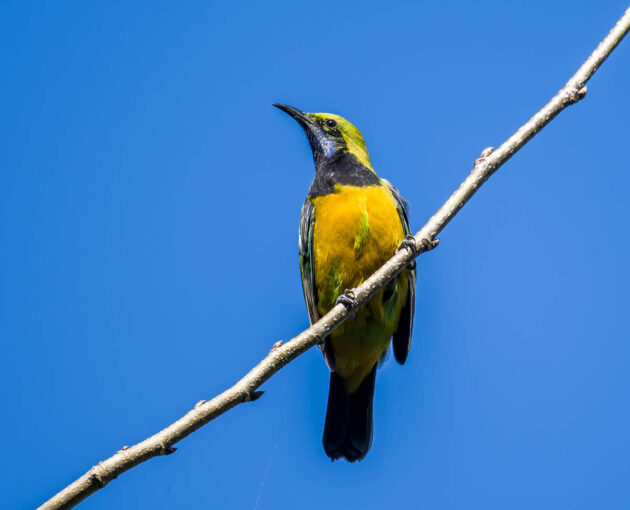
The species is also hunted for local consumption in Meghalaya (India), according to the HBW.

In my opinion, eBird is a bit unfair to the female Rufous-bellied Niltava.

The site says “the male is brilliantly colored …

… while the female is drab brown overall”
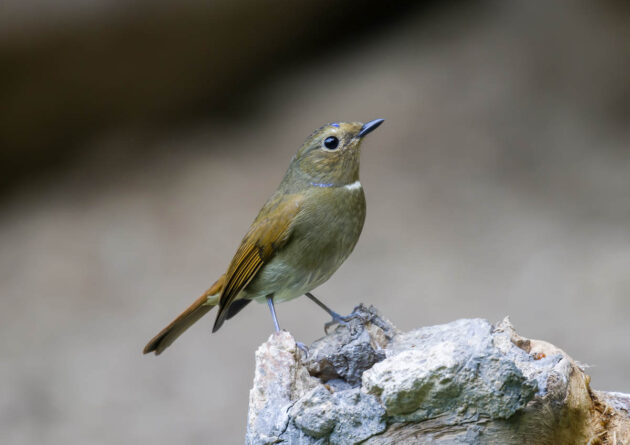
I think the tiny white and bluish bits of the female are quite attractive – maybe eBird should appreciate subtle beauty a bit more.

Then again, the HBW seems to ignore the female altogether, just calling the species a “large, stocky and brightly colored flycatcher”.
Source link

